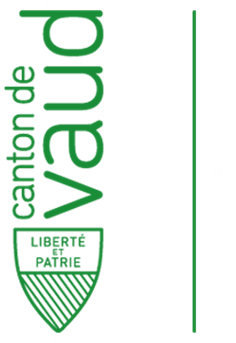How we created a modern and intuitive user interface during a mandatory technical upgrade - Bring confort to users by upgrading from an obsolete technology to an industry standard
Our client, the State of Vaud, started using Microsoft Exchange for emails and calendars. They needed to migrate all their applications and collaborators to the new solution. The Ordre Judiciaire Vaudois (OJV) could not migrate due to a legacy application used since 2001. Based on the Domino/Lotus Notes platform, it was used to schedule all hearings of the Vaud judiciary. This application coordinates the hearings' schedule of approximately 70 magistrates on 60'000 cases among the 33 judicial authorities and offices spread throughout the Canton.
OWT was mandated to design and implement a solution guaranteeing the same
functionalities of the legacy AUDI application but working with MS
Exchange. We took it as an opportunity to completely reshape the user
experience, with a powerful and intuitive interface. All that while
remaining compliant with the high-security standards of the State of
Vaud.
A new Web application for the hearings' management
To fully understand our client's business needs, we started the project with a short analysis phase. We first explored and understood the current solution to map its essential functionalities. We defined personas and user-journeys based on our observations and validated them with the Client. Once the functional scope of the solution was well defined, we started designing the new solution that would take the form of a web application. Together with the Client, we validated each screen and business flow of the application, fixing some inefficient flows that were enforced by the limitation of the old software.
Iterative Journey
- A blueprint phase of two weeks of analysis, to review the scope of the project, align all parties around the business needs and to design the new hearings' application
- A development phase of eight weeks simultaneously with the creation of a dedicated API
- A data migration spanned over 6 months to guarantee an uninterrupted business process for the users
Application Modernization
With the evolution of time, historical systems can no longer exist alone, have to integrate with other systems, and are difficult to maintain. As many organizations are still using systems based on obsolete software languages and irrelevant hardware components, the risk of cybersecurity has increased, with efficiency taking a real hit.
Here are three steps to follow when establishing an application
modernization strategy.
1. Identify critical applications
The first step is to identify high-value services, processes and systems
and examine how they could benefit from improved scalability, performance,
security and reliability.
To obtain this information, it is necessary to clearly identify what each
application does, the problems and opportunities it addresses, its
maintenance costs and how it could benefit from modernization. From there,
they can delve deeper into the specifics of the application, such as how
the service is delivered, who benefits from it, and the capabilities and
limitations of the technology in terms of performance and function.
Based on this information, explicit decisions can be made about which
applications to invest in and define a modernization application plan.
2. Understanding the transformation
Application modernization is not just a challenge but also a cultural one, and successful strategies must address both.
Guiding transformation efforts requires a good understanding of applicable business processes and their interdependencies: what the application is, how it works, what it connects to (databases, storage, network or other applications) who needs it how it is used and how it is maintained over time.
3. Plan the transformation
Agencies need to consider several different approaches. Responses can range from adding new functionality to the existing architecture to ensure a better fit with end-user needs, to completely redesigning and rebuilding the infrastructure. Containers, modern application stacks, micro-services, and the cloud make it easier to develop, deploy, manage and adapt current government applications to better meet demand
Application Modernization
As a leading Microsoft solution provider, we can help you to in the area of custom application development, and Application Modernization.
20
Offices migrated from Lotus Notes to MS Exchange
60'000
Cases handled using the new application
0
Days of business interruption








